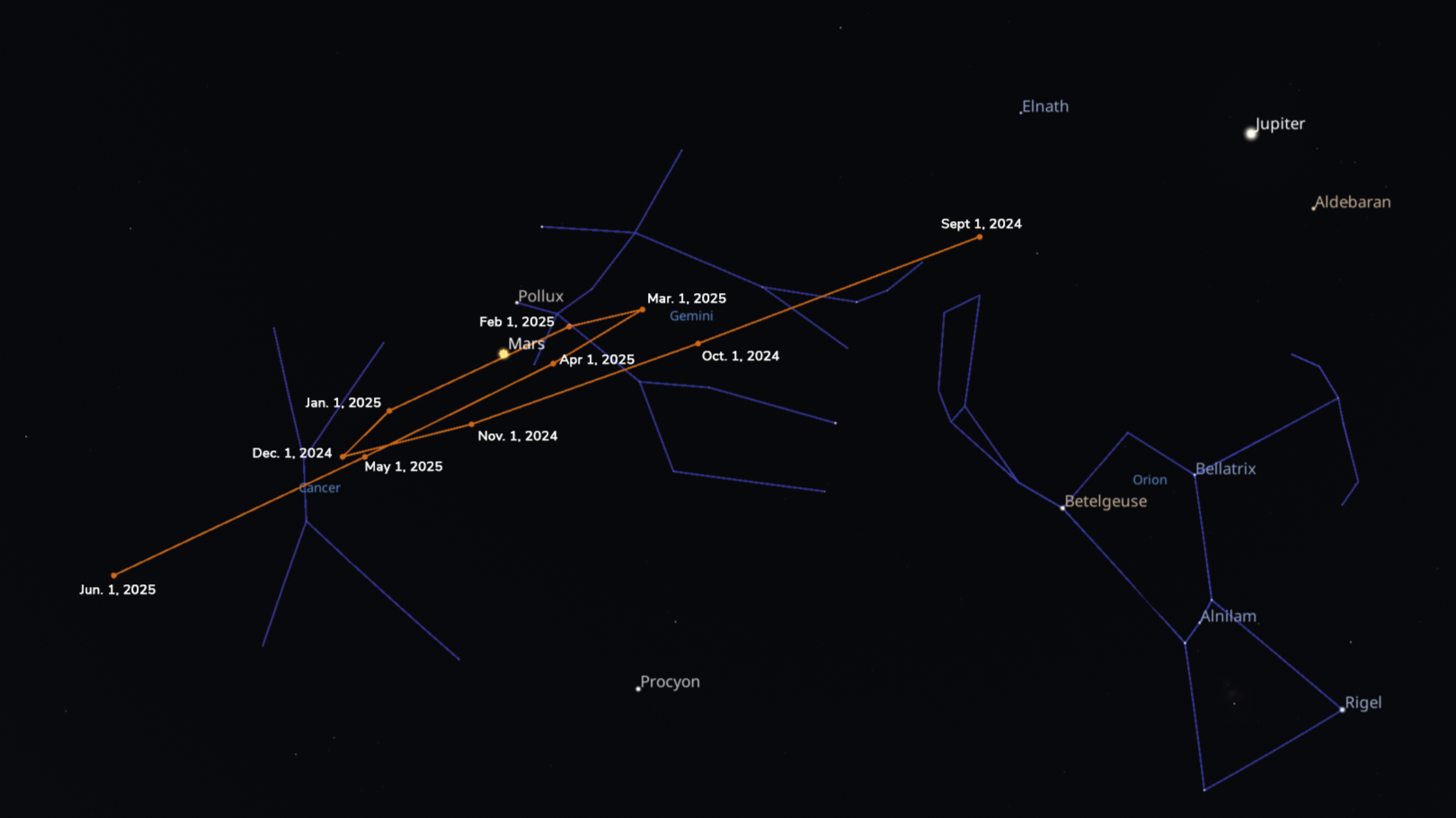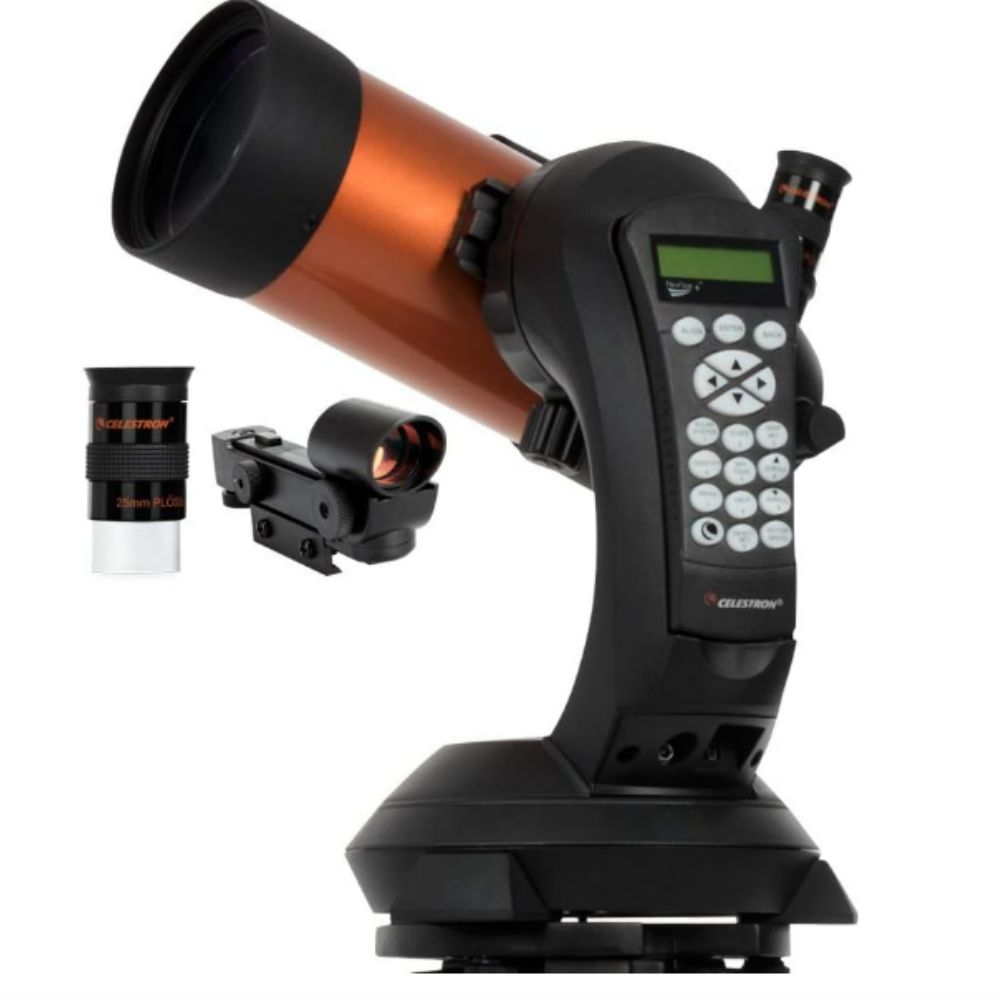3 min read
January’s Night Sky Notes: The Red Planet
by Kat Troche of the Astronomical Society of the Pacific
Have you looked up at the night sky this season and noticed a bright object sporting a reddish hue to the left of Orion? This is none other than the planet Mars! January will be an excellent opportunity to spot this planet and some of its details with a medium-sized telescope. Be sure to catch these three events this month.
Martian Retrograde
Mars entered retrograde (or backward movement relative to its usual direction) on December 7, 2024, and will continue throughout January into February 23, 2025. You can track the planet’s progress by sketching or photographing Mars’ position relative to nearby stars. Be consistent with your observations, taking them every few nights or so as the weather permits. You can use free software like Stellarium or Stellarium Web (the browser version) to help you navigate the night as Mars treks around the sky. You can find Mars above the eastern horizon after 8:00 PM local time.
Hide and Seek
On the night of January 13th, you can watch Mars ‘disappear’ behind the Moon during an occultation. An occultation is when one celestial object passes directly in front of another, hiding the background object from view. This can happen with planets and stars in our night sky, depending on the orbit of an object and where you are on Earth, similar to eclipses.
Depending on where you are within the contiguous United States, you can watch this event with the naked eye, binoculars, or a small telescope. The occultation will happen for over an hour in some parts of the US. You can use websites like Stellarium Web or the Astronomical League’s ‘Moon Occults Mars’ chart to calculate the best time to see this event.
Closer and Closer
As you observe Mars this month to track its retrograde movement, you will notice that it will increase in brightness. This is because Mars will reach opposition by the evening of January 16th. Opposition happens when a planet is directly opposite the Sun, as seen from Earth. You don’t need to be in any specific city to observe this event; you only need clear skies to observe that it gets brighter. It’s also when Mars is closest to Earth, so you’ll see more details in a telescope.
Want a quick and easy way to illustrate what opposition is for Jupiter, Saturn, Mars, or other outer worlds? Follow the instructions on our Toolkit Hack: Illustrating Opposition with Exploring the Solar System page using our Exploring Our Solar System activity!
Mars has fascinated humanity for centuries, with its earliest recorded observations dating back to the Bronze Age. By the 17th century, astronomers were able to identify features of the Martian surface, such as its ice caps and darker regions. Since the 1960s, exploration of the Red Planet has intensified with robotic missions from various space organizations. Currently, NASA has five active missions, including rovers and orbiters, with the future focused on human exploration and habitation. Mars will always fill us with a sense of wonder and adventure as we reach for its soil through initiatives such as the Moon to Mars Architecture and the Mars Sample Return campaign.






